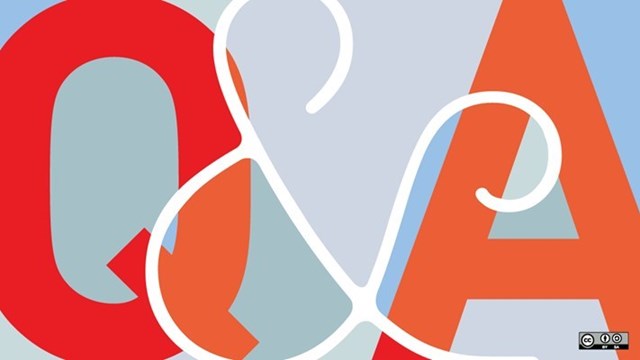In a movement to protect the populace from second-hand smoke, municipal governments are coming up with increasingly-strict bans on smoking in public places—even on streets, as evidenced in some California communities. Not surprisingly, more and more condominium associations are following suit.
“The general trend,” reports Stephen Marcus, a principal in the Braintree, Massachusetts-based law firm of Marcus, Errico, Emmer & Brooks, “is that non-smokers are getting more assertive about banning smoking… everywhere.”
This is largely a reflection of changing attitudes toward smoking. About 20 percent of the population nationwide (14 percent in Massachusetts) consider themselves smokers, and growing numbers of non-smokers are concerned about the health hazards of exposure to second-hand smoke. A 2006 Surgeon General’s report concluded that “there is no risk-free level of exposure to second-hand smoke.”
Getting the Go-Ahead
Given the groundswell of opposition to smoking in most communities, Marcus points out that it is possible to prohibit smoking throughout a condo property—even within each unit—“but it requires a change in the bylaw.” He explains that in condominium law, there is a hierarchy that must be followed by the board of directors/trustees and by a judge if there is litigation. The highest priority is a state’s condominium act, which is usually designed to provide some flexibility for associations to adapt their rules to their particular situations.
Formation of a condominium community starts with a “declaration,” which is a document recorded among the land records in the county or city where the property is located. That document asserts that the property is “declared” to be a condominium and spells out some basic issues, such as what constitutes a common element vs. an individual unit.
Next in line are the bylaws, the bible that governs the association. And finally, there are rules and regulations adopted by the board of directors or trustees. The board has great latitude to enact reasonable rules but its authority to do so must come from the preceding hierarchy.
If an association wishes to enact a total smoking ban that includes units, an amendment to the condominium’s bylaws will most likely be needed, notes Marcus, and that requires approval of a super majority of the co-owners. In common areas, boards have more freedom in enacting smoking bans with a simple rule change, and such bans are very commonplace.
Total smoking bans within condo communities are gaining ground across the country. There have been condo developments created in recent years with a “smoke-free” agreement built into the bylaws. Marcus cites an example in Boston, where at the Ritz Carlton Towers “there are five different community associations… and three of them have voted to amend their docs to ban smoking.”
Will Smoking Bans Affect Market Value?
Some condominium owners worry that a smoking ban could diminish the number of prospective buyers or tenants for their units. A 2008 survey commissioned by the Massachusetts Department of Public Health polled prospective tenants about this issue, and it reported that 43 percent of respondents shopping for apartments said they would pay more for a smoke-free building. Of those, one-fourth said they would pay up to 20 percent more and over 60 percent were willing to pay 10 percent more. In all, 80 percent agreed that ‘no smoking’ would be a plus in their selection of an apartment building. The bottom line is that since non-smokers now significantly outnumber smokers, smoking restrictions are likely to attract more buyers than they repel.
Projecting current trends out five or 10 years, the study suggests, the non-smoker to smoker ratio will become even more lopsided. Smoking bans will be more widespread, and with fewer options available to them, smokers will concentrate in the remaining buildings that do allow smoking. So associations that choose not to adopt smoking bans could be choosing, in effect, to become smokers’ buildings in the future.
It’s a major challenge when existing communities decide to change their docs with a super-majority vote. Even if successful, if such a change applied only to new residents, the effort would be pointless, says Marcus, “because second-hand smoke would still be a problem if smokers were grandfathered,” and only new residents were subject to a ban. But smoking as a health issue may override any potential for grandfathered rights.
“Many condominium attorneys are now referring to a court case from 2006, when a trial court decision in Colorado upheld a non-grandfathering provision in a condo community’s smoking ban [that included individual units],” cites Marcus. “Smoking is an addiction, and in the Colorado case, the smokers who lived there… unless they quit smoking, they had to leave their units.”
“Some associations regulate smoking by enforcing the ‘nuisance’ provisions that are typically found in condo docs,” he adds. Boards are gaining strength with smoking bans, since “some experts claim it’s impossible to prevent air drifting among adjoining units in multi-family buildings,” says Marcus. Local governments are tending toward a ban on smoking in public housing or multi-family buildings.
Smoking Not Yet Impacting Insurance Carriers
Smoking bans within a condo property, whether it’s by master deed throughout all units, or by a simple rule for common areas, “is not a part of the underwriting process right now,” states Jeff Grosser, vice president and a partner at Rodman Insurance in Needham, Massachusetts. “Although a non-smoking property may have some subjective value to an individual underwriter, who may look at a non-smoking community more favorably, it’s not considered a risk that would have any impact on [an association’s] premiums,” he adds.
Non-smoking unit owners may get a break, however. “For homeowners, there are some carriers, including Hanover Insurance and Peerless, that may offer discounts to non-smokers. Smoking does not affect a homeowner’s ability to find insurance, since carriers won’t typically deny coverage to someone who does smoke.”
Generally speaking, Grosser notes, “Losses are covered, even when they result from carelessness, or when rules are ignored. Even if smoking were prohibited throughout a property, insurance would still cover a loss attributed to smoking. It’s just like if a grill on someone’s deck starts a fire, even though it was used improperly, the loss would still be covered.”
Finding a Compromise
For managers of multi-unit buildings, smoking has always been a headache. David Barrett, director of operations at Crowninshield Management Corp. in Peabody, Massachusetts, notes, “I’ve had to deal with unit owners complaining about second-hand smoke. Even when there are [no smoking] rules, the whole issue is hard to regulate and hard to manage… It must be complaint-driven.”
Properties handle the issue in different ways, Barrett points out. “I had one association with multi-story garden-style units, and they had a rule that required anyone smoking outdoors to be at least ten feet from any building.”
In another situation, management used some creativity to reach a successful resolution, he relates. “We had a property, a garden-style building, built in the 1960s as apartments and converted to condos. The problem with these buildings, like in a high-rise, is that units are closer and there’s more air flow between units, as opposed to townhouses where units are more spread out.
“In this particular property,” he continues, “an owner had a serious issue with a neighbor’s smoking and some of the residents made an effort to get the bylaws changed and ban smoking throughout, even inside units. This didn’t work out… they realized there wouldn’t be enough support [for a super-majority] since a number of units had a single owner who happened to be a smoker.
“We finally worked out a compromise. The association took action—they paid to insulate and seal around door and window frames and any air-leak openings. Then, the non-smoking complainant ultimately agreed to install an air filtration system within the unit. In addition, since this association didn’t have any non-smoking rules in its common areas, they added them when the bylaw change attempt failed.”
Barrett agrees that smoking—whether regulating or banning it—is an issue that’s in flux and will continue to be for some time. “It’s a ‘hot’ topic… and getting hotter,” he contends.
Marie Auger is a Massachusetts freelance writer and a frequent contributor to New England Condominium.






Comments
Leave a Comment